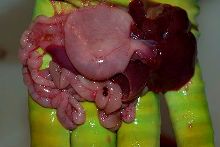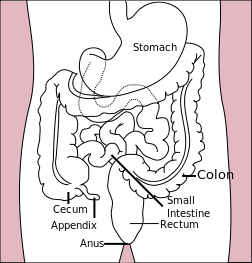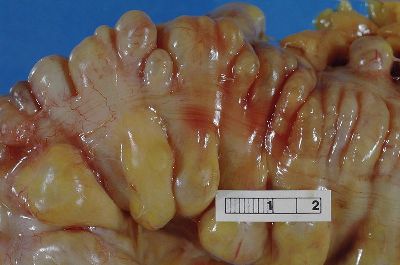Habitat

E coli O157: H7 lives in the Gastrointestinal (GI) tract the stomach of healthy ruminant animals. Humans are most likely to be infected with E. coli O157:H7 found in cattle. (to learn more about Bos taurus click here). Cattle and other few organisms do not have the receptors in their GI tract that the E. coli O157:H7 verotoxin is able to bind to. Some humans do not have these receptors either and are able to house this strain of E. coli O157:H7 without feeling sick. When an animal has these receptors the secretions of verotoxin is able to bind to them making the organism sick. Although E. coli O157:H7 lives mostly in the intestines it can survive outside of the animal for a short period of time. This is how the bacteria is able to infect more organisms. In a human the most common place to find E. coli O157 is in the colon (see picture below for a reference as to where this is located in the GI tract). These organisms that E. coli live in are called hosts. These hosts provide the bacteria with a constant pH, temperature, and free food. When inside the host it is able to grow and divide.


Learn more about how E. coli has adapted. Click here to go to the adaptations page.
